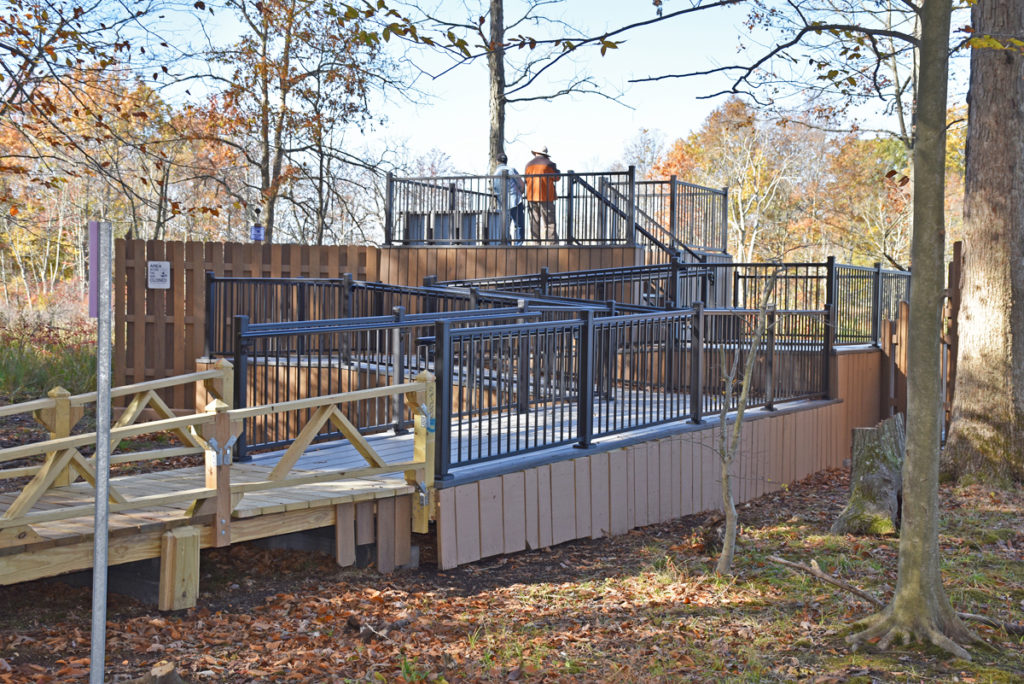
Following nearly 2,000 hours of volunteer work, the new Chandler S. Robbins Memorial Viewing Platform is now finished and open to the public. This new observation deck, at the site of the former Friends Blind, is a two-level viewing platform. The lower level is ADA compliant and raised about four feet from ground level. The upper level, accessible by stairs, is eight feet high. Both levels provide an extensive view of the refuge’s largest impoundment (artificial pool) and the surrounding area – a treat for birders and non-birders alike.
The viewing platform was made possible by a generous grant from the Robbins Family. As is noted on the memorial plaque, Chandler S. Robbins was a preeminent ornithologist and conservationist of the 20th century. He was a co-author of the popular Golden Guide: “Birds of North America: A guide to Field Identification” and was instrumental in organizing the North American Breeding Bird Survey in 1966, the primary monitoring program for birds in North America.
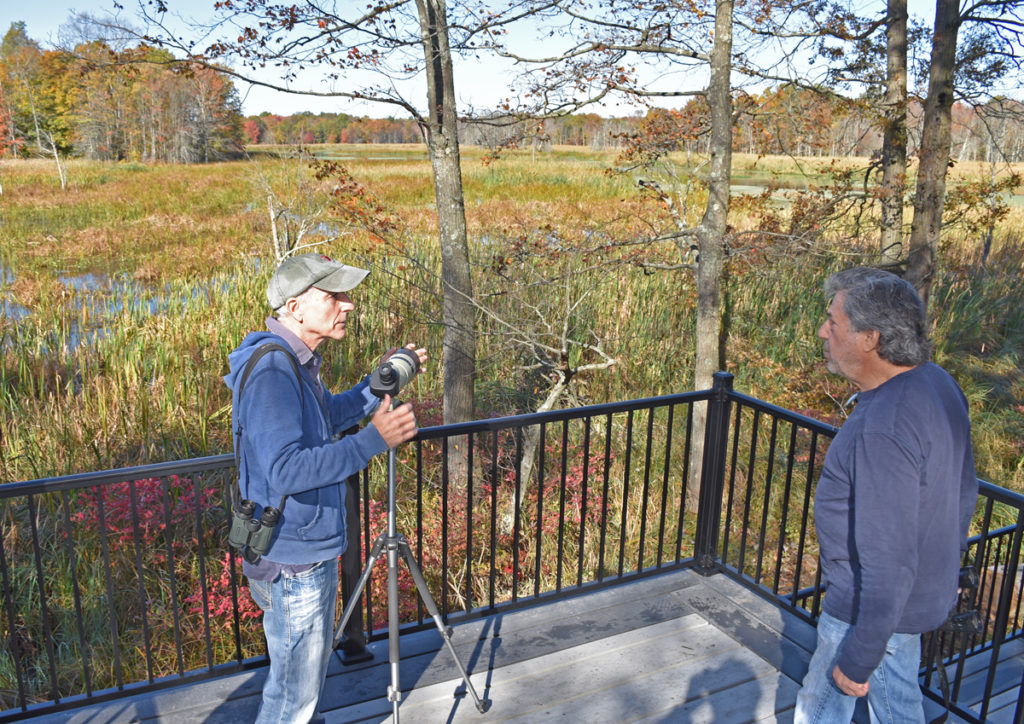
Volunteer and Friends Board Member George Solovay designed the structure and led a team of 14 volunteers in construction, including assistance from George Robbins, Chandler’s son. Oversight and assistance was provided by refuge staff. Information about the life and legacy of Chandler S. Robbins may be found here. https://www.pwrc.usgs.gov/robbins/index.cfm
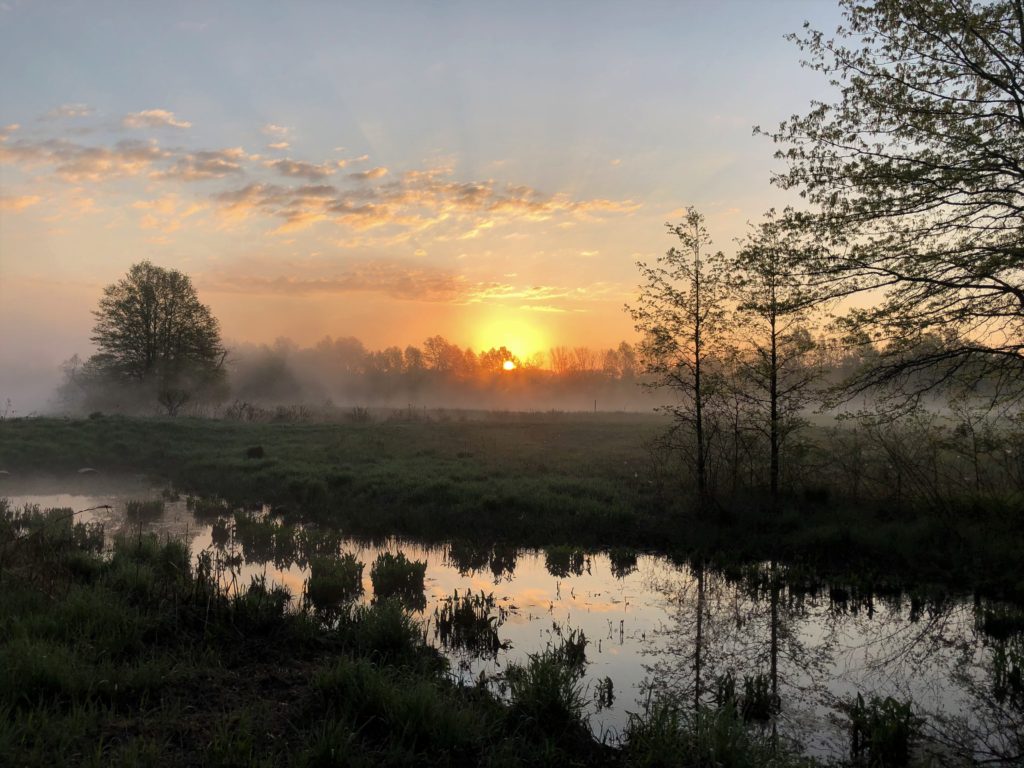
Welcome to Wild!
Sunday, October 13—All day, 8:00 a.m.—4:00 p.m.
The Big Sit!
Join the Friends and identify as many bird species as possible within a 17 foot diameter circle. Stop by the Overlook to find out what it’s all about. All are welcome!
Sunday, October 13, 9:00—10:30 am
Guided Bird Walk
We’ll meet at the Visitor Center and bird our way down to join The Big Sit at the Overlook. Easy walk on Pleasant Plains Road. Loaner binoculars available.
Sunday, October 13, 1:30—3:00 pm
Second Sunday… Bats At Great Swamp
Join Refuge Biologist, Marilyn Kitchell, for this update on bats—our only flying mammal, white-nose syndrome, and bat research. Helen C. Fenske Visitor Center.
Sunday, October 13 through Saturday, October 19, 5:30 pm to dusk
Sunset Walks
Join us for guided walks into the Management Area, normally closed to the public. We’ll enjoy an easy 1 mile (round trip) walk to the impoundment area and watch as flocks of ducks descend into the marsh for the night. Volunteer birders will help identify the many species. Walks will be cancelled in event of rain. Not suitable for strollers or small children. Bluebird Parking Lot.
Special Photographer Sunset Walk: Thursday, October 17, 4:30 pm—dusk. Get out to the impoundments early and set up your cameras. Bluebird Parking Lot.
Event Locations
Overlook—on Pleasant Plains Road
Bluebird Parking Lot—197 Pleasant Plains Road
Helen C. Fenske Visitor Center—32 Pleasant Plains Road
Note: Bridge at North Gate will be open during Sunset Walks
Rediscover Your True Nature at a National Wildlife Refuge Near You.
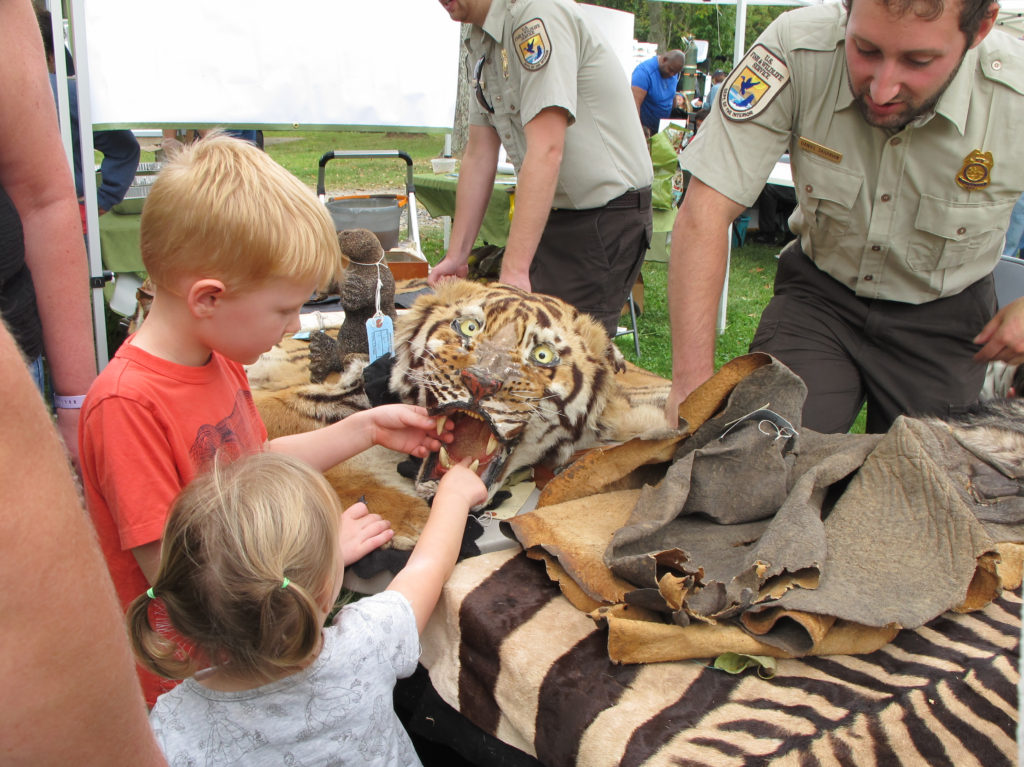
The sky was grey, but spirits were sunny at this year’s Fall Festival. Visitors swarmed the grounds to see the exhibits, play the games, try their hand at archery and see what would show up in the Passaic River seins. Youngsters (and a few oldsters) clambered on the heavy equipment, grabbed live fish in the touch tank and listened raptly to the Raptor Trust’s live presentation, with equally live raptors.
Almost 100 kids built birdhouses, while others played Watershed Jenga or took in this year’s play, “At Bat”. Of course, lots of free hot dogs, apples and drinks and the chance to get a Junior Refuge Manager badge in just one day. And as always, the winners of this year’s photo contest were announced. You can see who won, and watch a slide show of the winning entries, on our Photo Contest page here.
If you were there, thanks for coming. But if not, we’ll do it again for you next year.
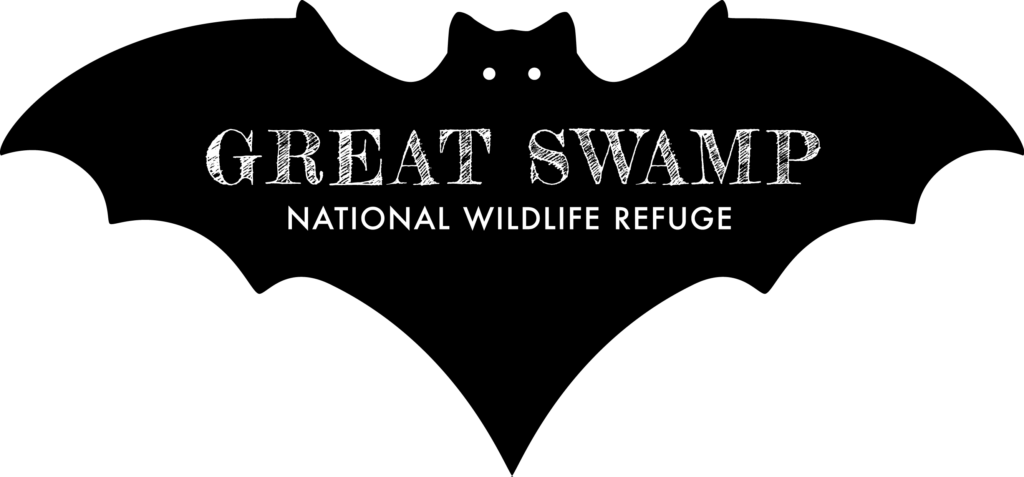
Illustration by Jane Bell
Fall Festival, September 14, 10:00 am – 3:00 pm
Help celebrate the fall season at the 20th Annual Fall Festival at Great Swamp National Wildlife Refuge. This free family event features outdoor activities for all ages. Climb up on the Refuge bulldozer and other heavy equipment. Try your hand at target archery or build a chickadee nest box to take home. Check out what’s in the Passaic River with river seining. There will be live turtles, snakes, frogs and fish. Our environmental partners will be on hand with displays and hands-on activities. Winners of the 2019 Photo Contest will be announced at 11:30 a.m. Enjoy hot dogs on the grill and this year’s fall apples. It’s all free, with plenty of parking.
This year our theme is Bats – the only flying mammal. There will be information about New Jersey’s nine species of bats, bat life history, myths, and the current status of the deadly disease – White Nose Syndrome – which has killed 7 million bats since it arrived in the northeast in 2006. There will also be bat prizes for our bat activities and games and an original play “At Bat”.
Join us at the Helen C. Fenske Visitor Center at Great Swamp National Wildlife Refuge, 32 Pleasant Plains Road, Harding Township, NJ (exit 30A from Route 287). This is a rain or shine event. Co-sponsored by Friends of Great Swamp NWR and the U.S. Fish and Wildlife Service. For more information call 973-425-9510.
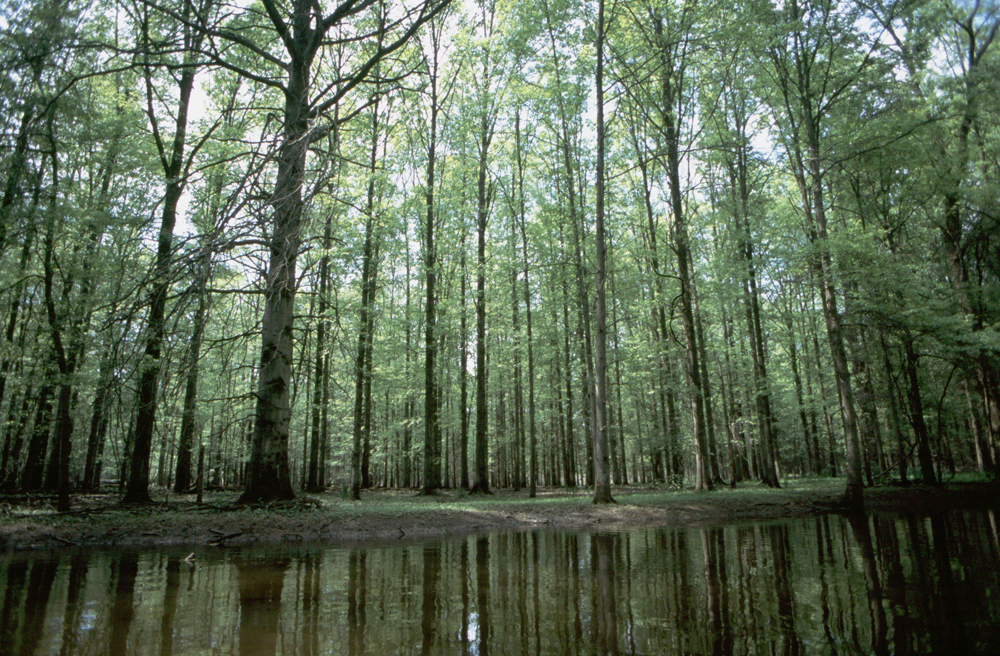
For most of us, a trip to the refuge means a stop at the Visitor’s Center and some time on the boardwalks at the Wildlife Observation Center. But if raw nature is what you crave, skip these man-made contrivances and head over to the Wilderness Area. Here you can wander through a primeval forest dedicated to providing a natural habitat for a diversity of species. And that includes you. Unlike the rest of the refuge, there are no limitations as to where you can trek. Stay on the trail or plunge into the brush, whichever you prefer.
At 3,660 acres, the Wilderness Area comprises about half of the entire refuge; including almost everything east of Long Hill Road. About 8 miles of marked trails wind through the area with access points, and parking lots, distributed around the perimeter. These trails are somewhat rugged and not recommended for children or those with limited mobility. They can also be quite wet and buggy, particularly in the summer months. So leave the sneakers at home and wear sturdy, waterproof shoes or better yet, knee high boots. And don’t forget the insect repellant.
Your reward will be an experience that is hard to duplicate in this part of the country. Complete isolation from the civilized world, and a sense of what things were like before we arrived on the scene. And for birders and photographers, the opportunity to get up close and personal with your quarry. Of course, the experience will vary greatly with the seasons. With the arrival of colder weather the ground becomes more navigable, and snowfall will bring out the cross country skiers.
A trip to the refuge can still include the Visitor’s Center or Wildlife Observation Center. But if adventure is what you crave, check out the maps and information on our Wilderness Hiking page. And have fun.
Wilderness Hiking Safety
• Bring your cellphone. A reliable navigation app could be useful.
• Take a trail map.
• Travel with a companion.
• The sun sets early in the winter months, so take that into account.
• Be sure someone knows your whereabouts.

Cyclists and turtles are two common road hazards encountered in the Great Swamp National Wildlife Refuge this time of years. We do our best to avoid the cyclists and hopefully they participate in the effort. But if not, we have insurance. Turtles, on the other hand, seem to lack the natural defenses needed to keep them from becoming roadkill. There they go, s-l-o-w-l-y crossing the road as they travel to their preferred nesting site. What are we to do?
Most obviously, try not to kill them. But if you’re not in a hurry and you don’t mind communicating with nature, you can pull over and give them a hand, so to speak. First determine if it’s a snapping turtle. If you’re not sure, assume it’s a snapping turtle. Be very careful with these critters as their jaws can inflict serious damage. If you want to err on the side of caution, do not attempt to move these. However, you can wait patiently for it to continue its journey to the other side while you direct traffic.
If it’s not a snapper you can just lift it up by the sides of the shell and move it to the edge of the road, facing the same direction in which you found it. Otherwise, here is a short video from the Toronto Zoo which demonstrates good turtle moving techniques (thanks to the Friends of Blackwater NWR for this link). Our refuge is home to these turtles, and we need to do our part to share the road with them. Also, cyclists.

